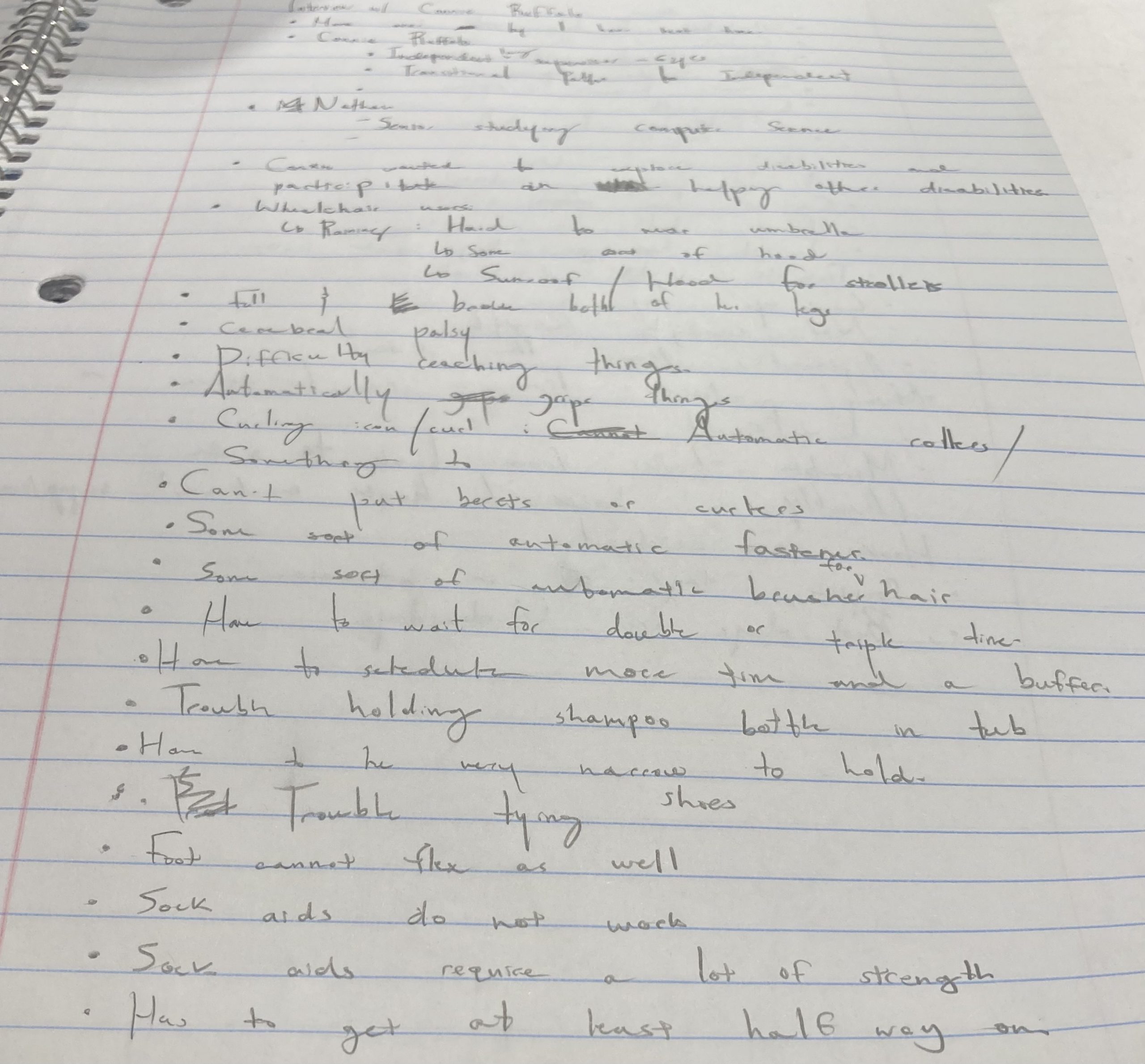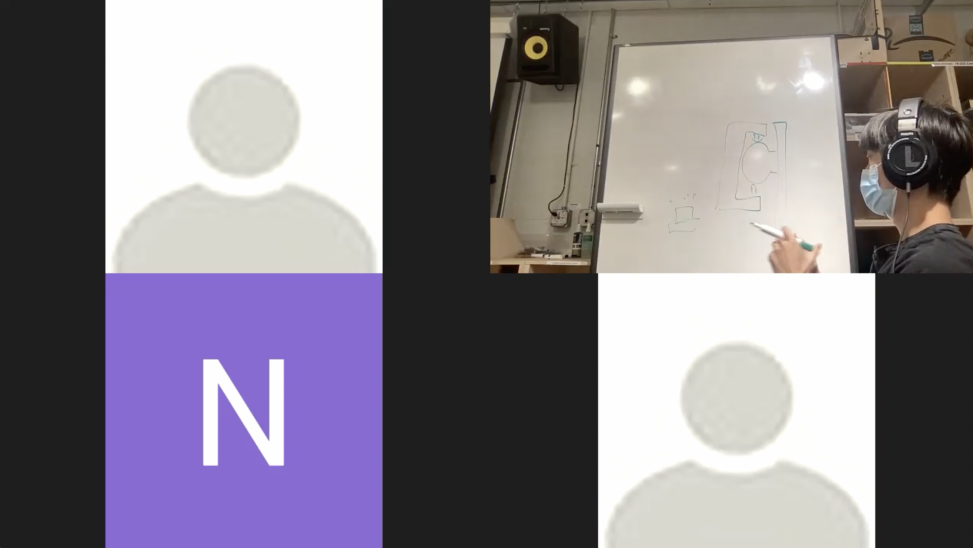Introduction:
This project is done with the intent of creating an assistive device for a client who faces certain challenges, and to start it off, an interview was done to help familiarize the team and client. This meeting was conducted in October 2021, with the purpose of Team Apricots, consisting of Peter, Evangeline, and Nathan, learning more about their client, Connie, and what sort of challenges their project could address. The meeting was held online through Zoom, with each individual in their own separate spaces.
Agenda:
In terms of setting up the meeting, a text group chat was created, and from there, the group was able to come up with an appropriate time for said meeting.
Meeting Agenda (follows the suggested agenda on the course website):
- Group member introductions followed by Connie’s introduction.
- talk about her disability and what that means for her
- ask about what she does for a living and her day to day lifestyle
- share personal stories about interests/hobbies
- Overview of expectations for the final product that we will be developing
- Non-professionals, all new to building devices from a hands on approach
- Not intended to invent something completely new and scalable as a product
- We are trying to build a useful prototype of an assistive device
- Ending with a reasonably well done product at the end of the 5 week timeframe
- Discussion of daily tasks that Connie has trouble with and potential solutions
- Start with asking her if she has any specific tasks that she struggles with
- where do these problems come from?
- what would need to happen for this to be solved?
- how does she generally work around this problem?
- Ask about hobbies that she likes doing at home
- what are some struggles she has with these hobbies?
- what are workarounds that she has found for any problems she has?
- Start with asking her if she has any specific tasks that she struggles with
- Whiteboard initial ideas and drawings
- Make sure we share contact info, emails, phone numbers, best way to contact each other
Summary:
The interview began with brief introductions, and then, what specific disabilities Connie has. However, in terms of the bulk of the interview, most of the content of the interview involved the team learning more about what challenges Connie and people that have similar disabilities to her face in their day-to-day life, rather than brainstorm specific ideas to address said challenges. As the team learned more about Connie, it was more clear what sort of device we could build in terms of feasibility, as well as what things to look out to help make an assistive device that was not intrusive. For instance, because Connie does not have much hand dexterity or strength, it becomes difficult when it comes to activities such as cutting meat, unlocking her door, and gripping shampoo bottles. Other tasks, such as tying shoes or putting socks were difficult, and even on-market “solutions” such as sock aids were not that comfortable or easy to use. We also learned about more about the wheelchair she uses, and certain limitations that come with her wheelchair. Connie mentioned how her wheelchair has hooks located on the back of her wheelchair, but for Connie, the accessibility of these hooks is not satisfactory, and additional side hooks would also be helpful. In addition to problems specific to Connie herself, Connie also outlined more general issues for other people with disabilities, such as how certain products/services are hard to get or access because these people live in rural areas. If their products or services require external management or maintenance, then this becomes even more difficult and frustrating for people in more rural areas.

Peter drawing out image of an idea that could help with turning door knobs.

Image of some of the notes taken during the interview.
Reflection:
Looking back at how the interview meeting, it went pleasantly well, as some of the team felt a bit nervous going into the interview, but as it progressed, a good pace and ambience was established. We did not experience any sort of long lulls in our interview, and Connie was able to articulate clearly difficulties she had and was eager to answer any questions we had. While the interview did not go exactly as planned, the insights the team was able to obtain was conducive in ideation. If one aspect was lacking, it would have helped for Connie to have shown us her wheelchair and the extent of her physical strength and dexterity, but unfortunately, time ran out before we could get that far. What was perhaps unexpected, was how everyday tasks that we would do without second thought were not as simple for people with certain disabilities, and coming out the interview, this made a strong impression on us. Another point that stood out to the group was how some services and products’ accessibility was not equal across all populations, as rural areas have more difficulty.
